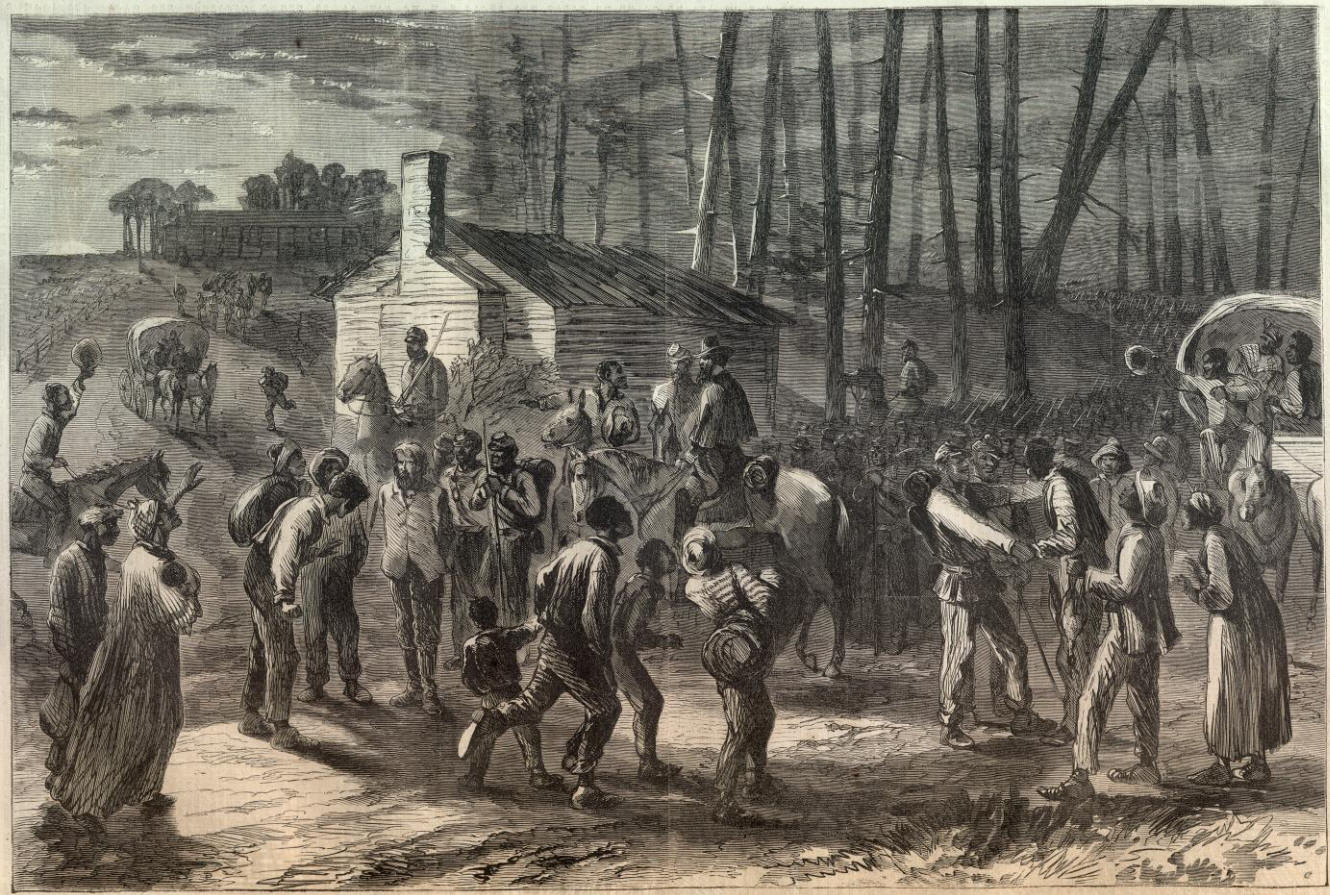I have decided to take the journey with Captain Edward S. Daniels beginning with when he enlisted with the 35th Infantry USCT on April 28, 1863. Remember in the last post, we had discovered that he first enlisted and served with the 1st Massachusetts Infantry in May 1861. See African Americans served in 1st Massachusetts Infantry in 1861 before USCT. Well, Captain Daniels life as in the 35th Infantry USCT includes prison and illness in South Carolina. We will reveal his story as we travel through his Civil War record.
I feel an extensive review of his service will help us understand the life of a Captain in the USCTs, and we will discover resources to document more of the history of Civil War ancestors which we may have not previously considered. Hopefully, at the end of this journey, we all will we wiser because of it.
His Civil War service record was on Footnote. The second image in the file shows that he started in Company E of the 35th. He was light skinned with grey eyes and auburn hair. Born in Old Cambridge Massachusetts, and was a "jeweller." He signed up for a period of three years.
I feel an extensive review of his service will help us understand the life of a Captain in the USCTs, and we will discover resources to document more of the history of Civil War ancestors which we may have not previously considered. Hopefully, at the end of this journey, we all will we wiser because of it.
His Civil War service record was on Footnote. The second image in the file shows that he started in Company E of the 35th. He was light skinned with grey eyes and auburn hair. Born in Old Cambridge Massachusetts, and was a "jeweller." He signed up for a period of three years.
 |
Confusion about regiment names
After USCT regiments were officially recognized by the Federal government, names of the regiments which were formed previously were renamed. While we know that Daniels was wounded while serving with the 1st Massachusetts Infantry, and mustered out in October of 1861, I have not as of yet been able to account for the time lapse between 1861 and his enlisting in the 35th in April 1863. See Civil War Colored Troops: 35th Infantry (New York Military Museum)
I have, however, discovered that the 35th Infantry USCT was previously the 1st Regiment North Carolina Colored Volunteers which were organized in New Bern, North Carolina on June 30, 1863. Daniels record says he enlisted with the 35th Infantry USCT in April 1863, but it was not organized until June of that year. Image 5 of his file indicates that he enrolled in the 1st Regiment North Carolina Colored Volunteers on April 28, 1863 in Boston, Massachusetts and was mustered in on May 18, 1863 in New Bern, NC. See Thirty-fifth United States Colored Troops (First North Carolina Colored Volunteers)
 |
| Image 5, 35th US Colored Infantry » D » Daniels, Edward S (28) at Footnote.com |
 |
| Colored Troop Under General Wild Liberating Slave in North Carolina, Son of the South |
Account of First North Carolina Colored Volunteers, December 16, 1863
History can reveal many gems to those who search it out. It makes expanding a search really worthwhile. I found an article at Chronicling America which illustrates the things that were truly important to African American troops and contraband. It is entitled:
"General Wild's Expedition After Guerrillas"
"Enthusiasm of the Colored Regiment"
"They Hire Teachers to Attend Them in the War"
This account was submitted by Champlain, H. M. Turner from the camp near Portsmouth, Virginia on December 11, 1863. Anyone who was not strong enough to enter battle stayed in the camps.
Turner says that six days previous Brigadier General Wild left on a expedition with his colored soldiers, "the first and 5th United States colored troops, the 2nd North Carolina Colored Volunteers, and detachments from the 55th Massachusetts and the 1st North Carolina." It is not known if Company E, Daniels company was among them.
"The troops went off with a full determination never to be captured alive. Hundreds of them when leaving waved their hats, and most clamorously halloed, death before imprisonment."
The troops from several companies pooled their money and paid teachers who traveled from all over $7 to $30 dollars a month to travel with their regiments to teach them during leisure hours. How wonderful to be able to know that even though they had embarked on the most important fight for freedom, they made time for education. Many of the teachers refused to be paid. To read this article in its entirety, see: Daily national Republican. (Washington, D.C.) 1862-1866, December 16, 1863, Image 1
________________________________________________________________________







